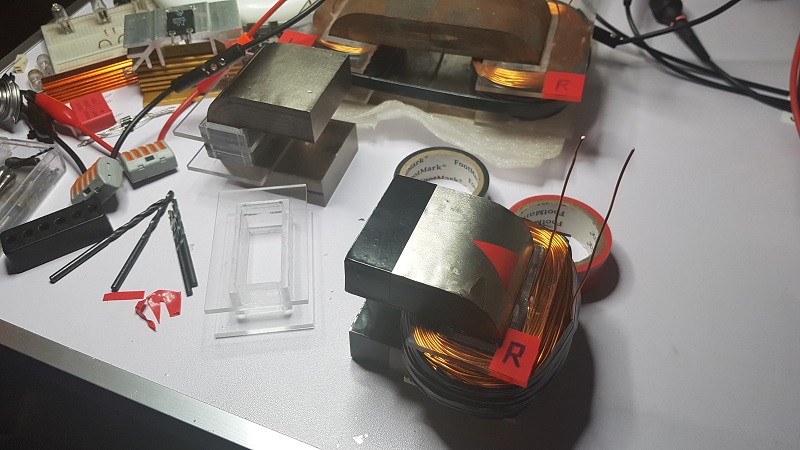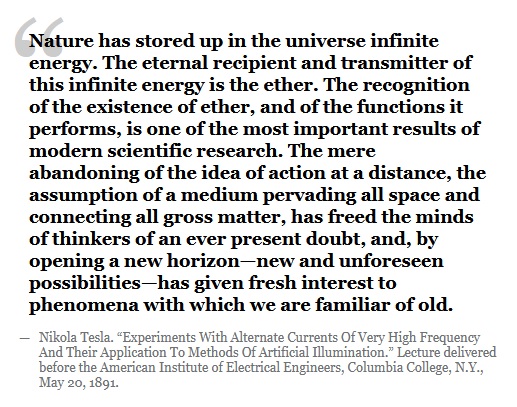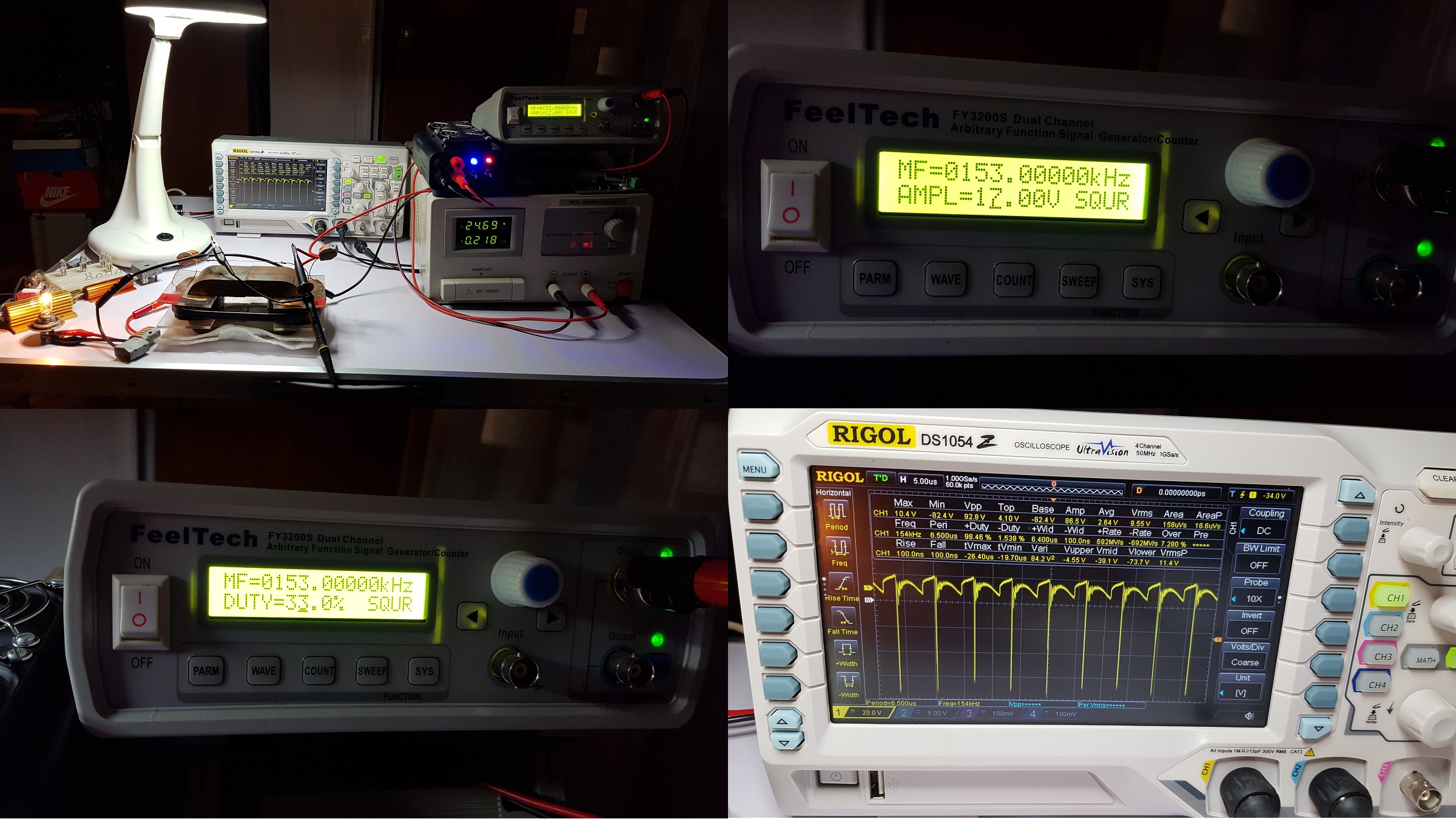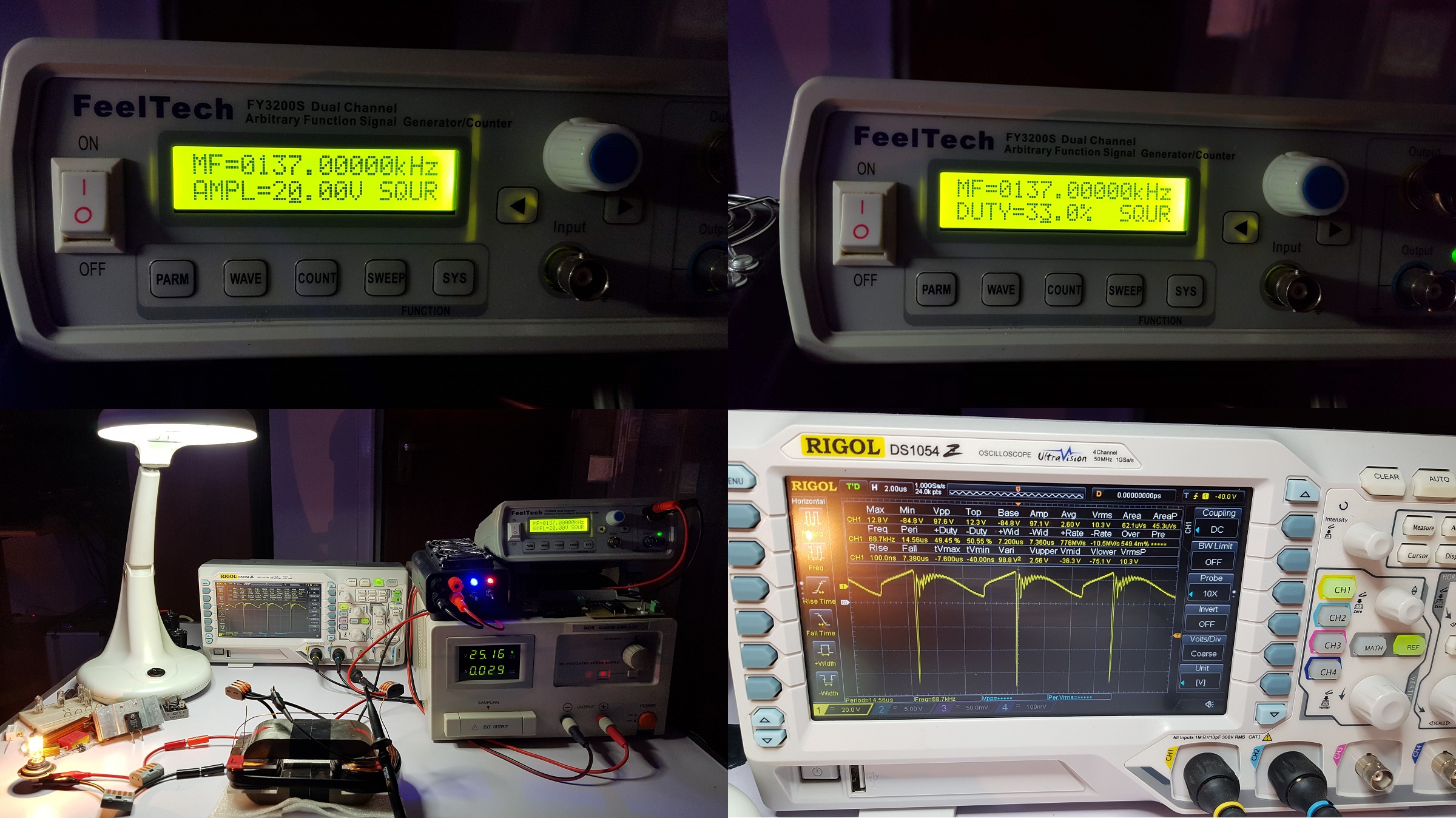Hi guys, I have multiple updates.
First, I found out why long time ago ZPM destroyed the electrolytic capacitor from one of the channels of my bridge rectifier using MBR 4045 PT Schottky diodes: they are not fast enough to rectify so the capacitor is actually receiving negative voltage on its positive terminal. As you know I replaced the electrolytic capacitors of my rectifier with new 680uF/400V capacitors and tried again.
This is without rectifier just having the oscilloscope's probe on light bulb's terminals:

And this is with the rectifier on ZPM's ouptut:

As you can see the diodes in bridge fail to rectify and we have negative voltage on capacitor's positive terminal.
Then I tried with a improvised bridge rectifier using faster diodes (SF 28 G) and the good thing is these diodes rectify but the bad thing is they get hot very fast (within about 5-10 seconds) so they can't be a permanent solution:

So I should try to find diodes like these but witch don't get hot so fast and so strong (after all it's a lot of energy wasted from ZPM's output). I need to search for those better diodes.
Another really good news is the fact that the ZPM replication is ready and is functioning just like the prototype:
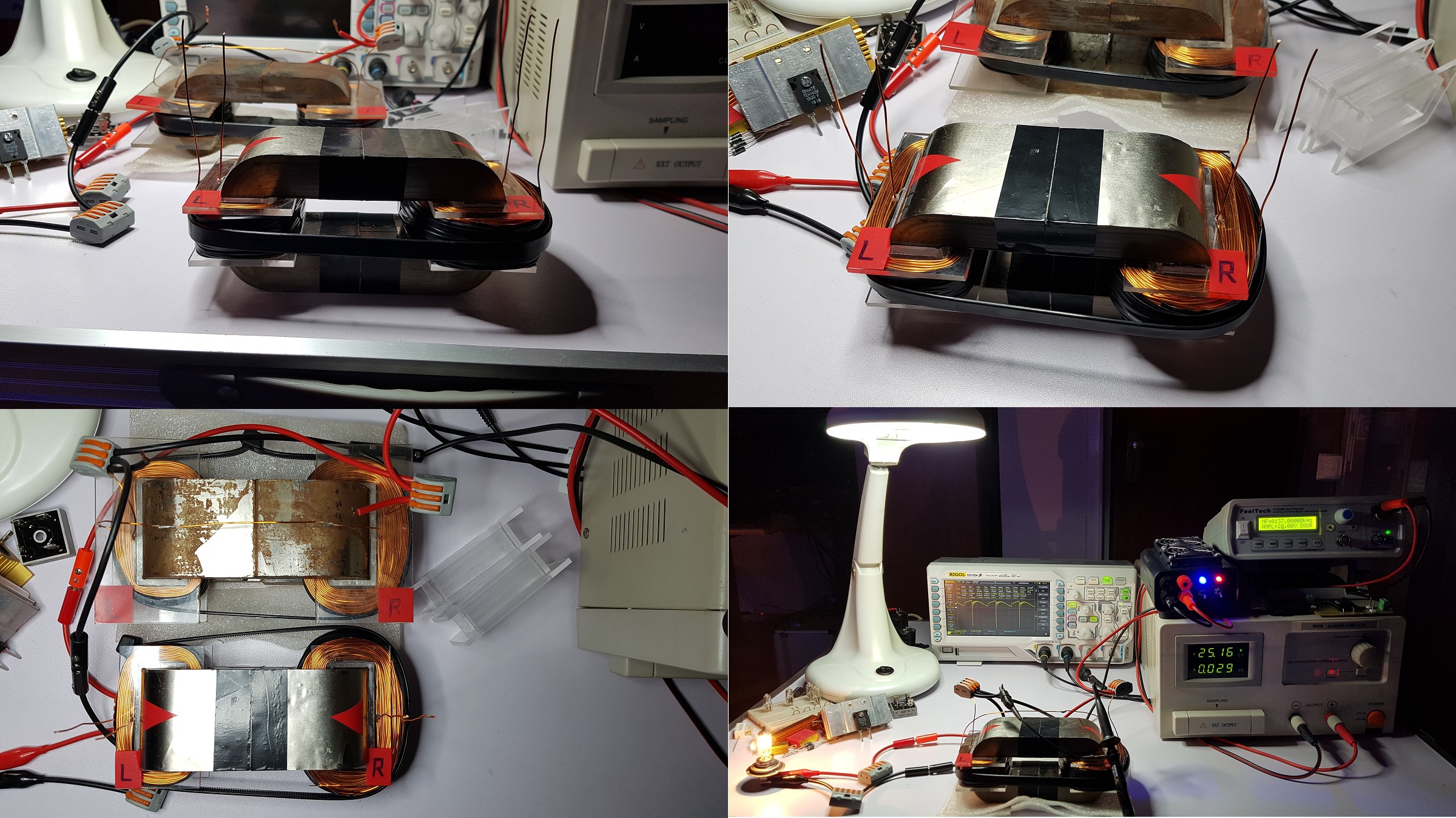
So the prototype can be replicated and now I have actually two functional ZPMs.
I'll document the building process below.
This is the step where I check the polarity of the magnetic field for each coil so I know how to connect the coils between them so I make sure on the top of the ZPM are two North magnetic polarities opposing each other:
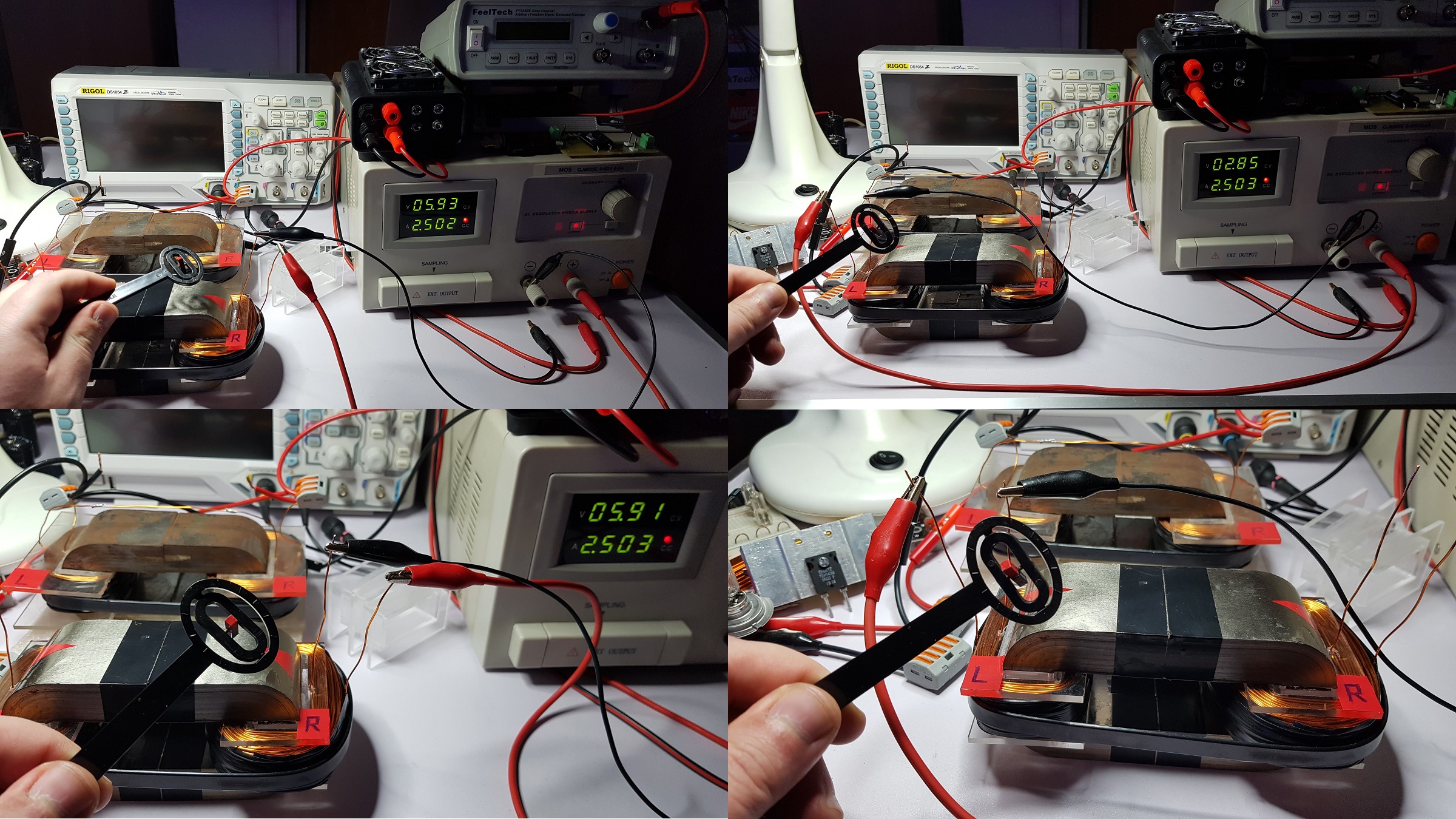
The coils are exactly 150/300 turns using 0.8mm wire, considering the coil supports are smaller than the ones of the prototype I tried to build the coils tighter.
In the next step I calibrated my LCR and measured the characteristics of the coils.
The characteristics of the bigger coil ("R") are these:
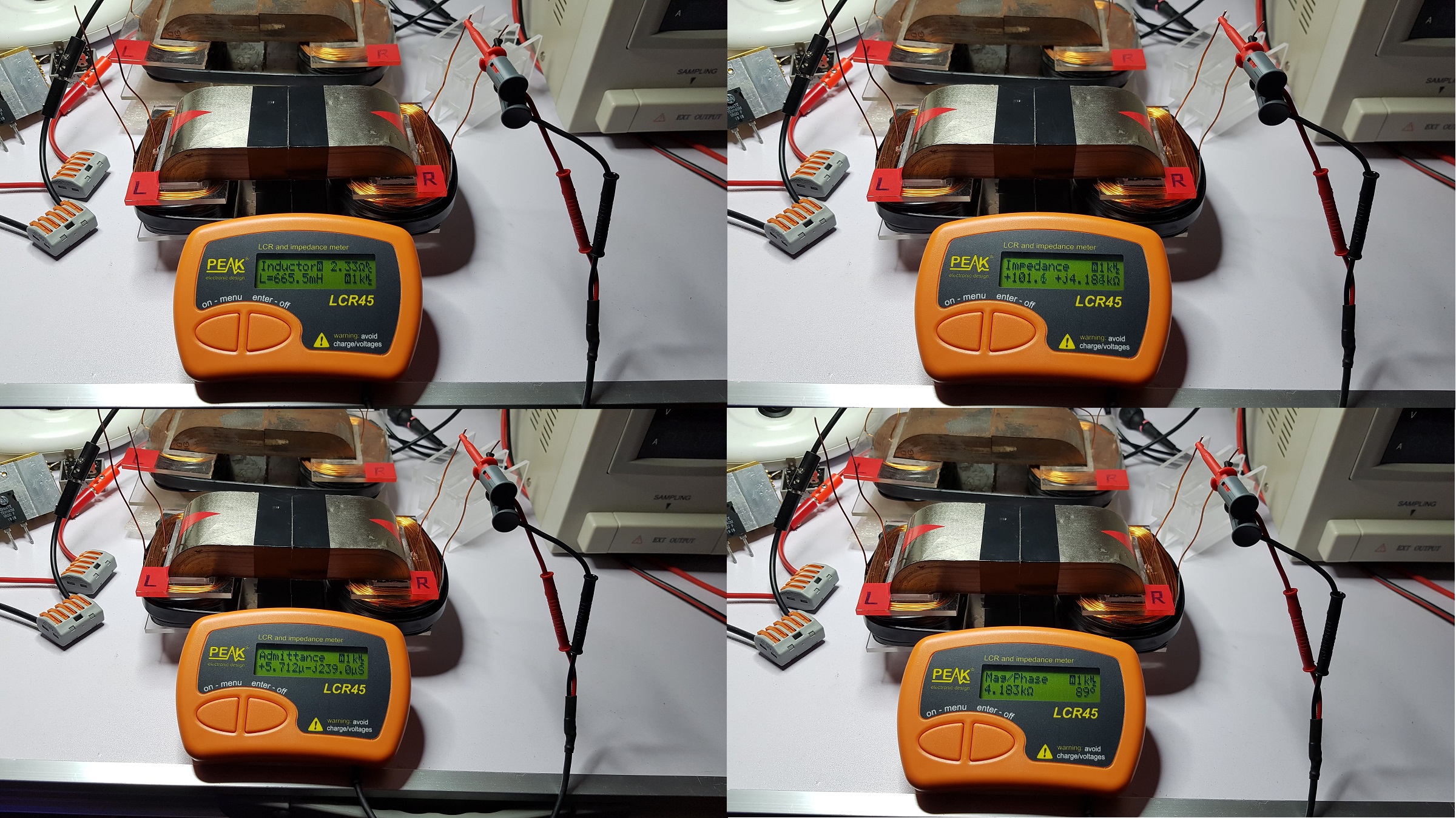
The characteristics of the smaller coil ("L") are these:
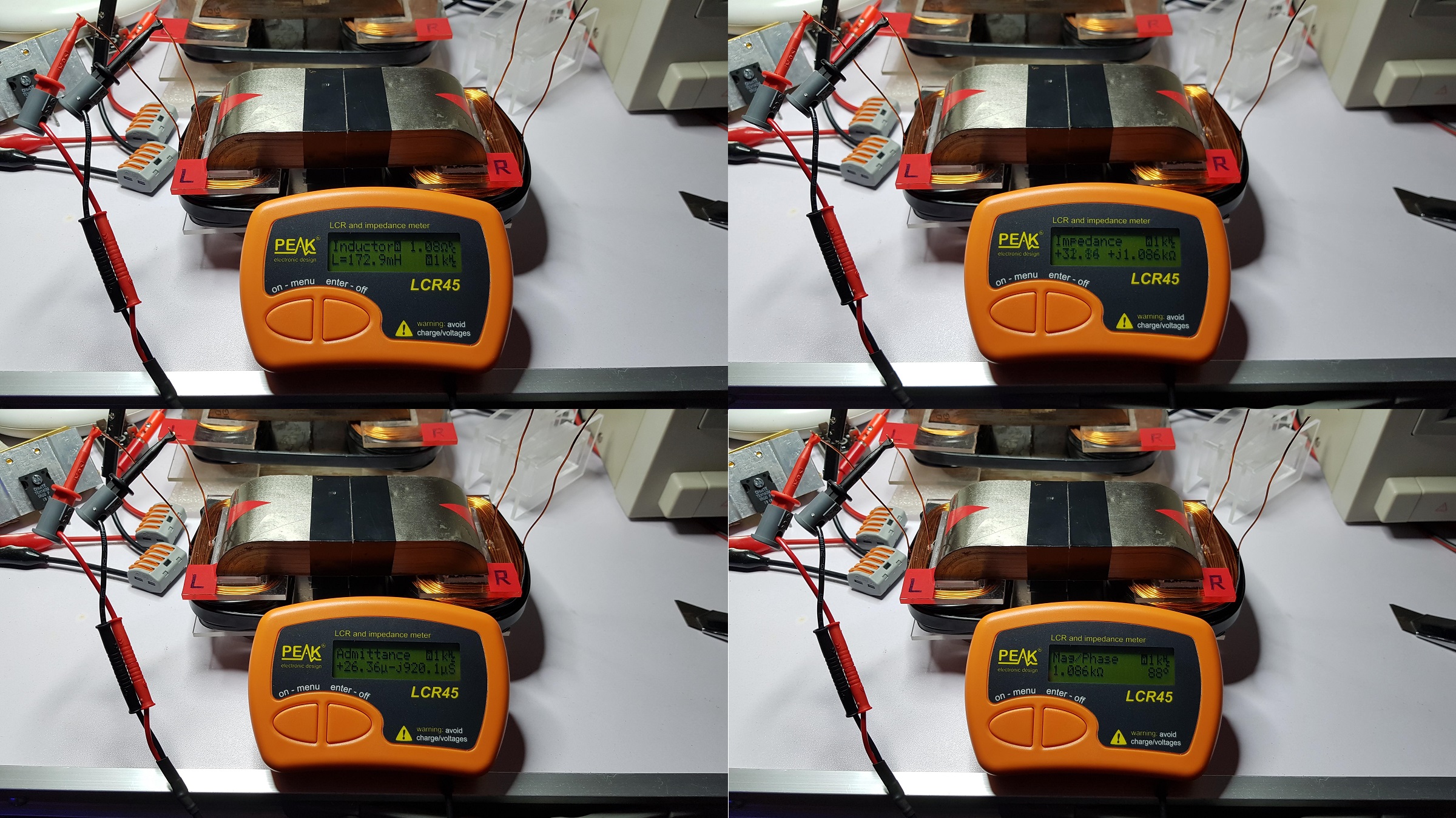
During the frequency sweep I found that the optimal frequencies of the device are almost identical with the frequencies of the prototype (just few KHz difference).
Below is a test with a 12V/55W light bulb on ZPM-2's output, let's name it this way:
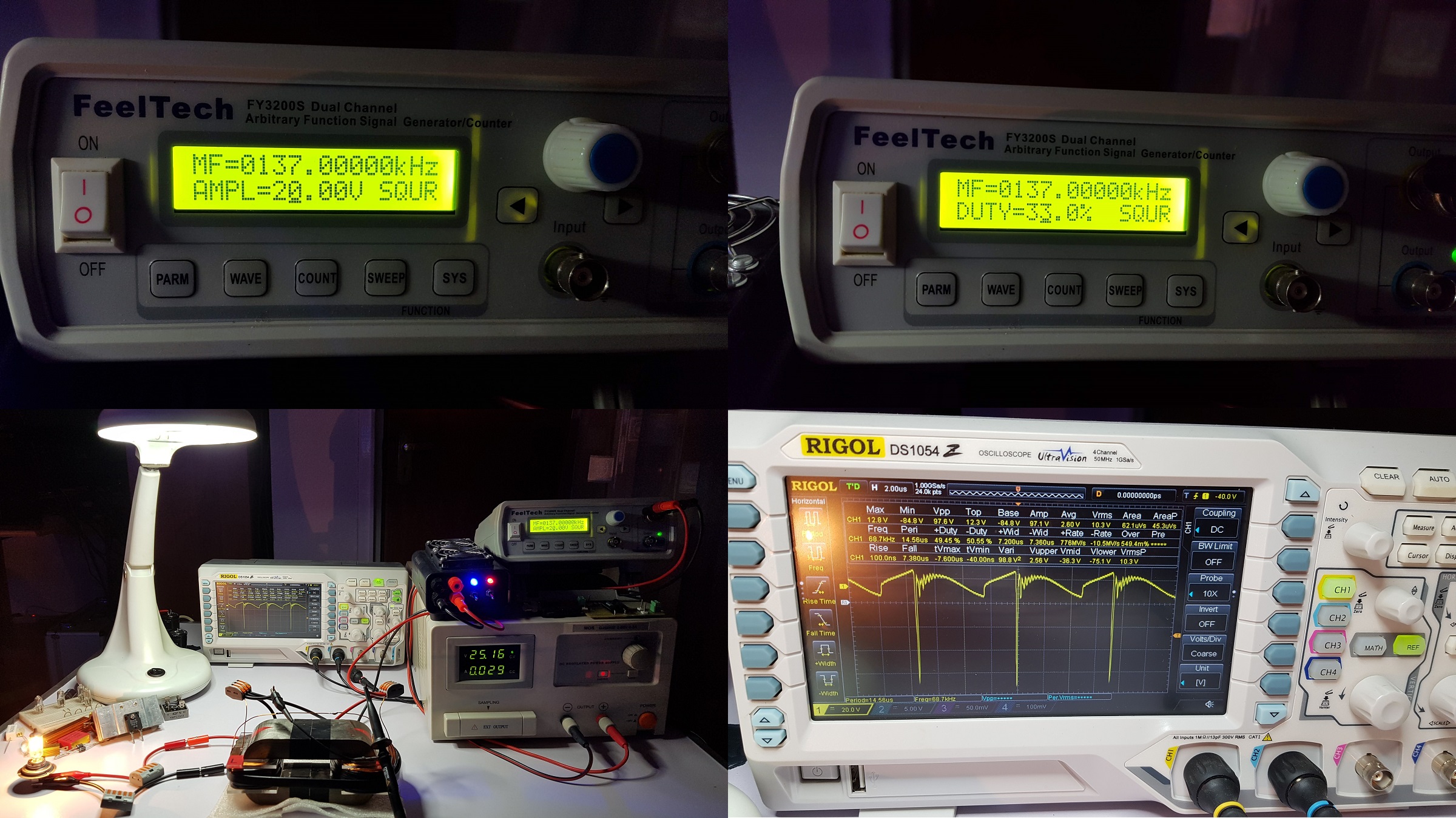
And two more photos of the output on the oscilloscope:

So ZPM can be replicated. I placed the prototype in a sealed bag, I hope this will minimize the advancement of the rust on the Metglas core. I'll use it in experiments when it will be necessary, if I find differences in behavior of the new ZPM.
I'll use this new ZPM for enhancements (modifying the coils, additional coils and so on).
Another photo with the desk lamp off to check the luminosity of the 12V/55W light bulb:
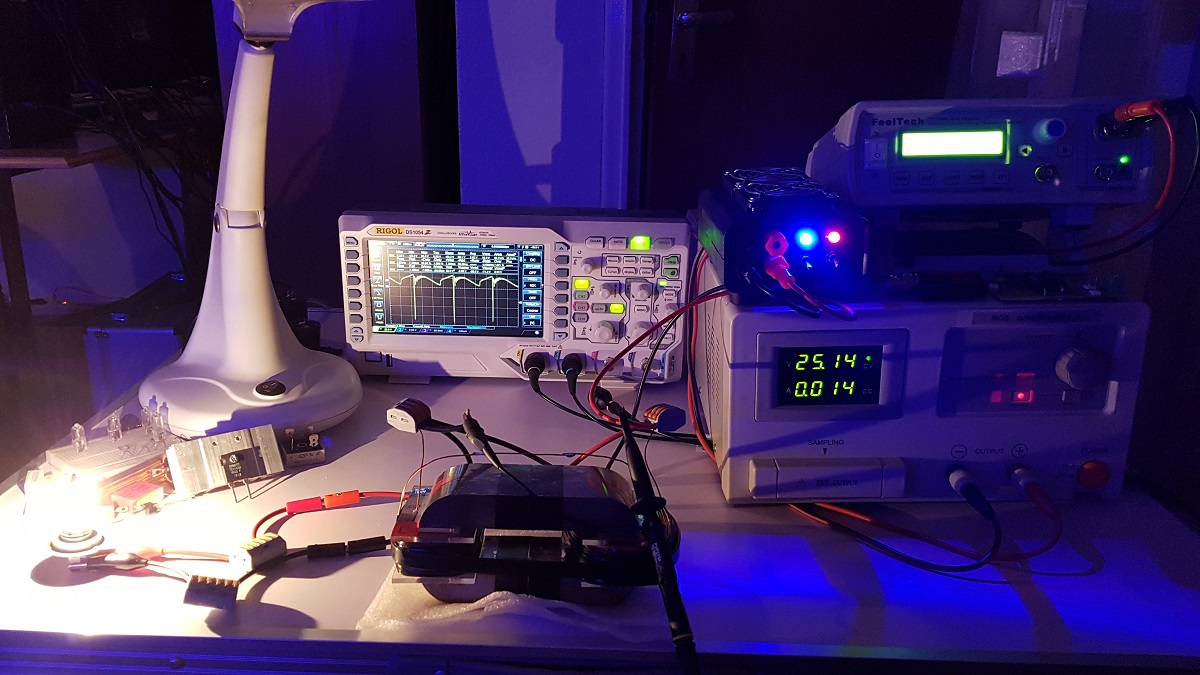
Edit: I just compared the inductance measured for each coil of the prototype long time ago and the inductance measured for each coil of the replica today:
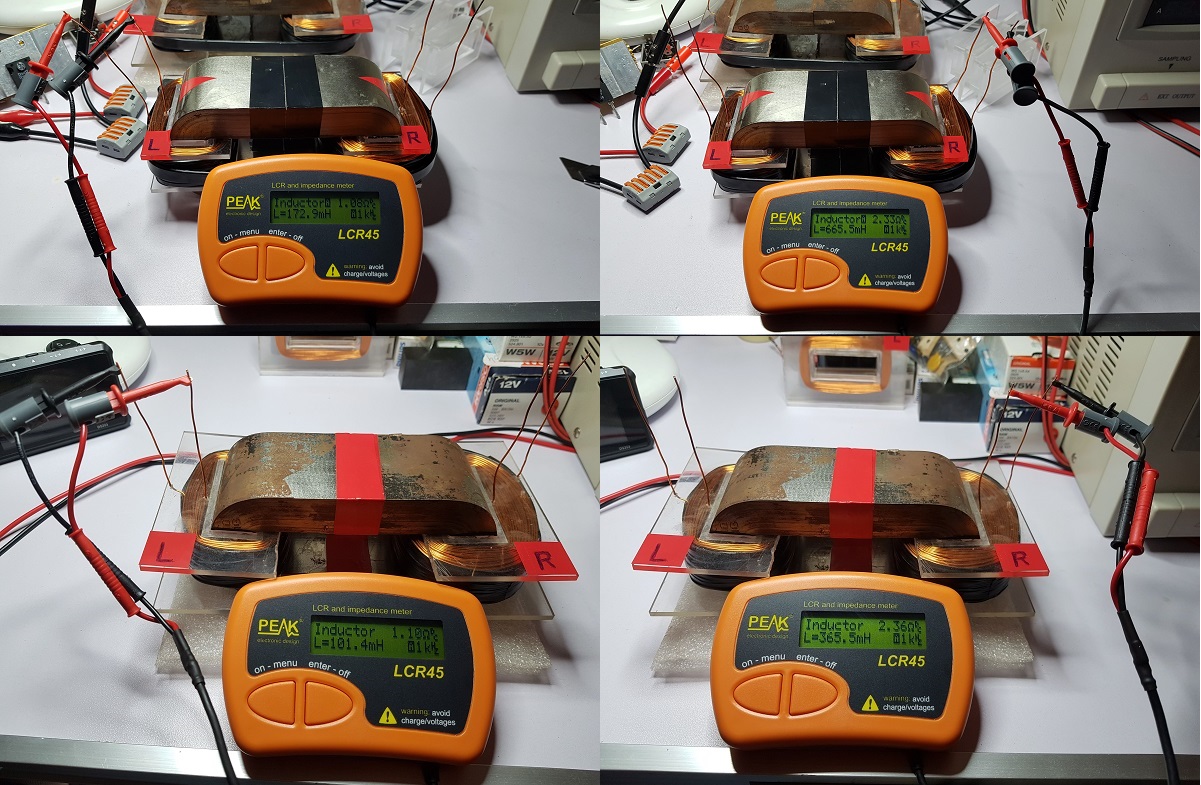
For the smaller coil ("L") I see 101.4 / 172.9 mH. Let's say this is normal as I made the coils tighter on the replica.
But for the bigger coil ("R") I see 365.5 / 665.5 mH. That's almost double inductance. I have no explanation of this difference so big.
I calibrate my LCR every time I make measurements, I calibrated it in that day and I calibrated it today.
Still, something seems wrong with the measurements of the coils characteristics.
| "If you want to find the secrets of the universe, think in terms of
energy, frequency and
vibration." |
|
|
Nikola Tesla |

